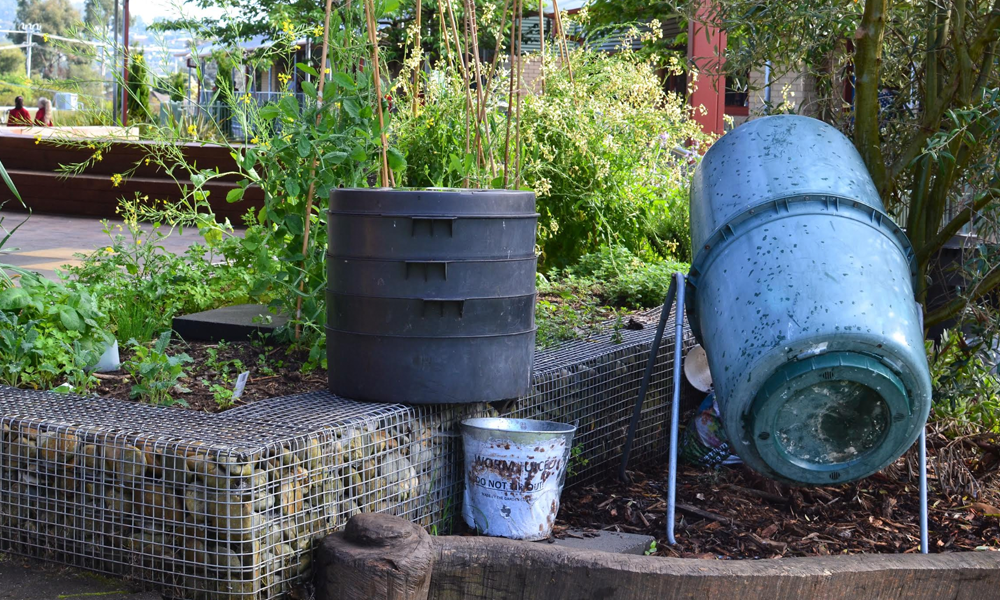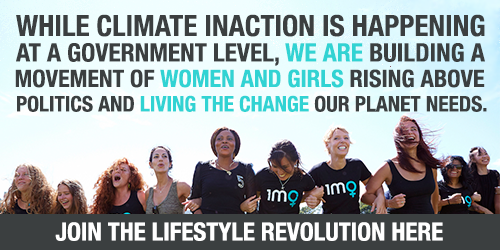Waste from food, both in the form of uneaten food and packaging, is a massive environmental problem. Within many Australian schools, children, parents and staff are taking steps to change this. School canteens are evolving, no longer dominated by the sausage rolls and chips that many of us grew up with. One of the great things about working towards a zero waste school canteen is that there are spin off benefits that go way beyond the zero waste movement's primary goal of living more sustainably, such as:
- A more nutritious diet with more wholefoods and less processed food
- Exposing kids to a wider range of foods than they might normally be offered
- A bit of positive peer pressure: many children are more likely to be adventurous in their eating when surrounded by other children eating the same thing
- Children can benefit socially, emotionally and educationally from being involved in food preparation, service and cleaning up
- Supporting local food producers, particularly in rural areas
- Increasing awareness within the school community about the environment and healthy living
We've compiled some advice from two canteen managers who have been working towards reducing waste in their canteens in Tasmanian schools. Marisa Mastrocola runs a zero waste canteen at Richmond Primary School and Yen Chamberlain is in the process of making changes to the canteen at Illawarra Primary School.
- You don't have to be a canteen manager to initiate change. Teachers, pupils or parents can lead the way. Children were instrumental in the changes at Illawarra Primary School when one class asked to bring their own keep cups for hot chocolate. Within a few weeks the whole school was on board, with 85 % of hot chocolate orders being served in keep cups.
- Start with small changes and see how they go, and work within the limitations of the school and its resources. There is no need to change everything at once.
- If freezer space is available, choose meals that can be cooked and frozen in large batches and reheated. Soups, baked pasta dishes, fried rice and burrito mince are ideal.
- Find someone within the school community to take home the food scraps for their compost or chickens.
- Preparing nutritious meals from scratch means more work, so it helps to get the kids involved, for example, SRC or environment club members, individuals with a particular interest in cooking or kids that might benefit from some out of class time with an adult.

- Find the most efficient way to utilise human resources. Perhaps student volunteers are better employed serving food rather than food prep? Then get them behind the counter, and this frees up parent volunteers for food prep. Give kids a free meal in return for their help. Yen finds that the older classes love helping in the canteen and she gets more volunteers than she can use.
- If kids are spending time out of class to help, flexibility and good communication with teachers is key.
- Keep it simple by offering a choice of two meals, perhaps one meat and one vegetarian (Marisa's canteen serves predominantly vegetarian food), plus a surprise dessert, based on seasonal ingredients.
- Another way to keep it simple is to have no drinks on the menu. Or suggest that kids bring keep cups.
- There are various ways that cutlery and crockery can be organised: Yen's canteen serves meals in paper bags or compostable containers and kids bring their own cutlery from home; this works as long as they remember it! Spare cutlery could be kept in classrooms for those who forget.
- Another approach is to keep all crockery and cutlery in the canteen. Marisa serves meals on melamine plates, and metal cutlery is distributed with meals. The children are responsible for washing up their own things in buckets of hot soapy water set up on trestle tables.
- Experiment with new ways of doing things. Yen's canteen had always wrapped sushi and salad and chicken wraps in cling wrap, but she discovered that they hold together perfectly well in a paper bag without cling wrap.
- Instead of providing individual sachets of condiments like tomato sauce, provide large squeezy bottles so kids can help themselves.
- Even if you use package-free ingredients as much as possible there are likely to be times when you end up supplementing with packaged ingredients. The school environment offers many opportunities for upcycling; Marisa gives tomato cans to people to use for growing seedlings or making lanterns. Yen gives milk bottles to a groups of kids that bottle and sell worm juice from the school worm farms.

- Negotiate good deals with local businesses and food producers; many are happy to support their local schools.
- Source fresh produce from the school garden if there is one, or families with gardens. Try herbs, spinach, fruit that thrives in your climate, or the little-known miners' lettuce, which grows easily with complete neglect and is appealing even to salad-averse kids because of its cute little round leaves, soft texture and mild flavour.
Anyone within the school community can initiate changes. Start small, pick one or two things from this list or try a strategy with one interested class, and see how it goes. Kids care about plastic pollution (listen to this heartfelt talk by Jacinda Arden); let's give them every opportunity to be part of the solution.

